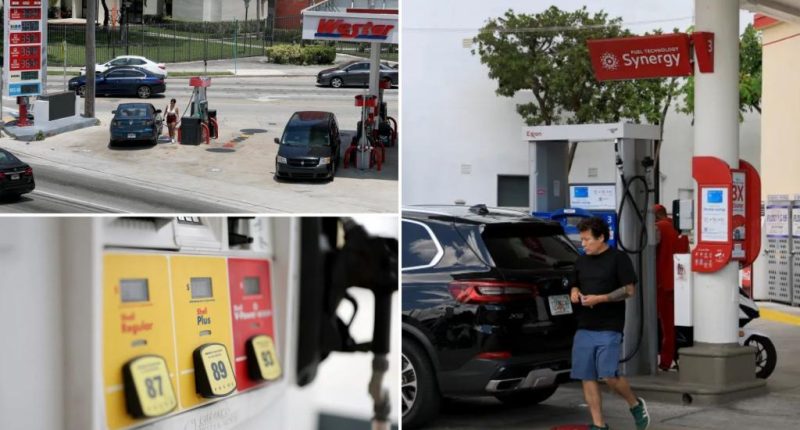Share this @internewscast.com

Gas prices heading into the Memorial Day weekend hit a four-year low as millions of Americans prepare to hit the road.
Adjusted for inflation, the average US retail gasoline prices for the Memorial Day weekend are 14% less than the previous year, primarily due to declining crude oil prices, as reported by the US Energy Information Administration (EIA).
For example, the retail price of regular-grade gasoline averaged $3.17 per gallon on Monday, marking an 11% decrease from the same time last year, according to the EIA.
Over the past decade, excluding 2020, retail gasoline prices have risen by an average of 19%, or 49 cents per gallon, from January to May, based on EIA data.
However, gas prices typically increase heading into the spring and summer months due to factors such as increased demand for summer travel and refineries switching over to summer gasoline blends, which are more expensive to produce.
West Coast prices averaged $4.29 per gallon on Monday, down 10% from this time last year, according to the EIA.
Meanwhile, Gulf Coast prices averaged $2.79 per gallon, down 13% from this time last year, and on the East Coast, which has the most gasoline demand of the five regions, retail gasoline prices have dropped 17% from 2024.
Prices averaged $2.99 per gallon in the region as of Monday.
In the Midwest and Rocky Mountains, prices averaged $3.03 per gallon and $3.13 per gallon, respectively. That’s a decline of 15% and 12% from the prior year after adjusting for inflation, according to the EIA.
This comes as a record number of people — about 45.1 million — are expected to travel at least 50 miles from home over the Memorial Day holiday period despite concerns over rising costs, according to AAA.
AAA estimated that the majority of them, 39.4 million, will travel by car over Memorial Day weekend, which spans from Thursday to Monday.
Lipow Oil Associates President Andy Lipow said pump prices are expected to remain between $3.25 and $3.50 per gallon this summer, well below last year’s levels.
He attributed this in part to tariffs that are contributing to putting pressure on oil prices on the expectation of slower growth, coupled with optimism from the Organization of the Petroleum Exporting Countries and its allies, known as OPEC+.
The group estimates that global oil demand will grow by 1.3 million barrels per day in both 2025 and 2026.
According to Bloomberg News, the group is also discussing whether to make another large output increase in June, causing oil prices to fall further.
Phil Flynn, Futures Group senior analyst and FOX Business Network contributor, said it appears that OPEC is going to raise production and take away more of their voluntary production cuts, which “comes as the market was slipping into a supply deficit.”
“This put a negative spin on prices but was another sign that OPEC wants to keep President Trump happy,” Flynn said.
















